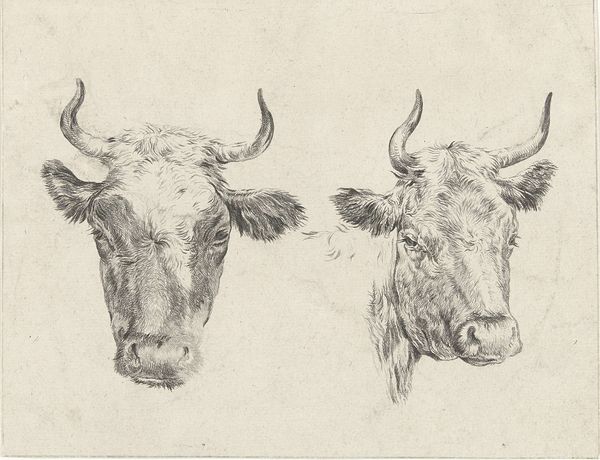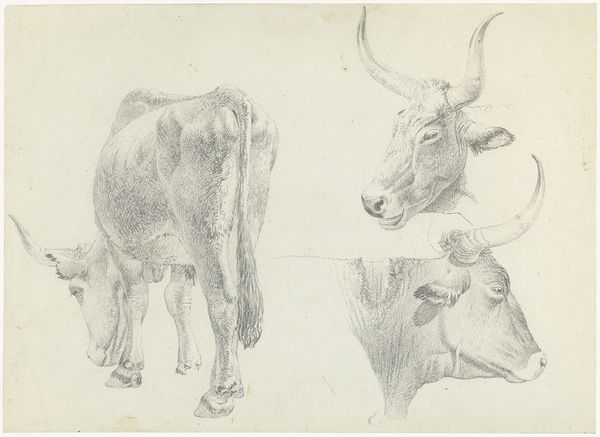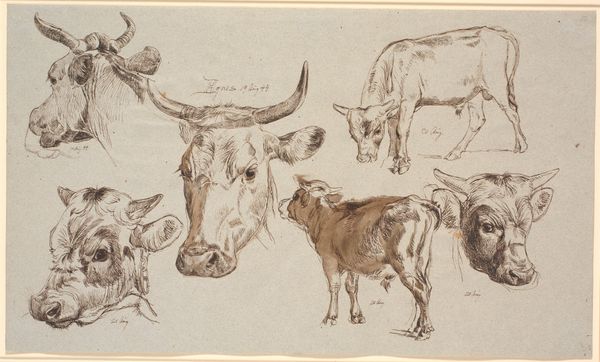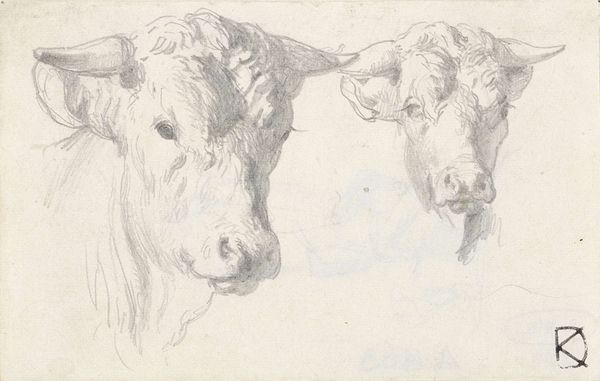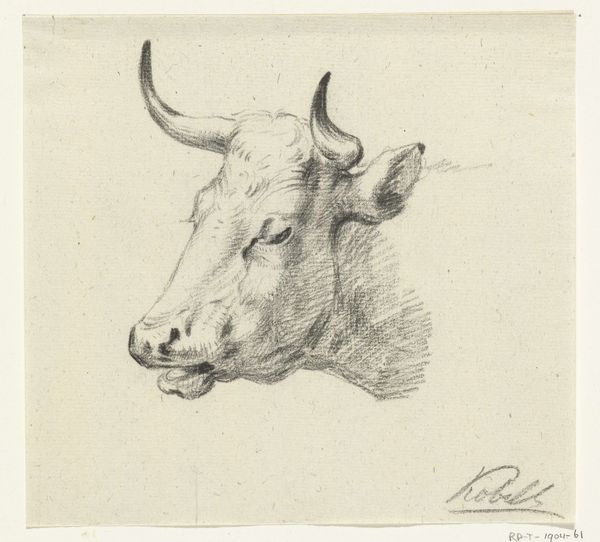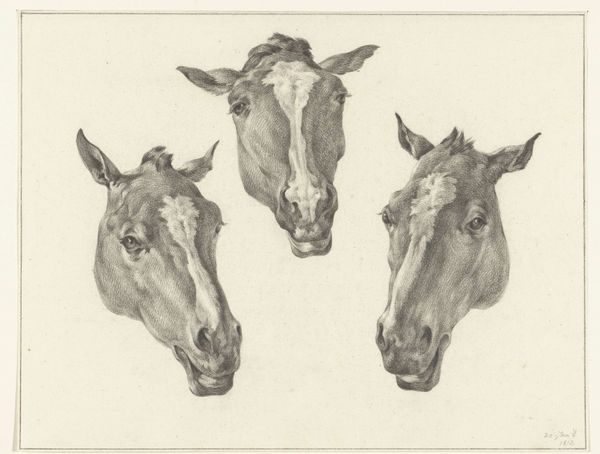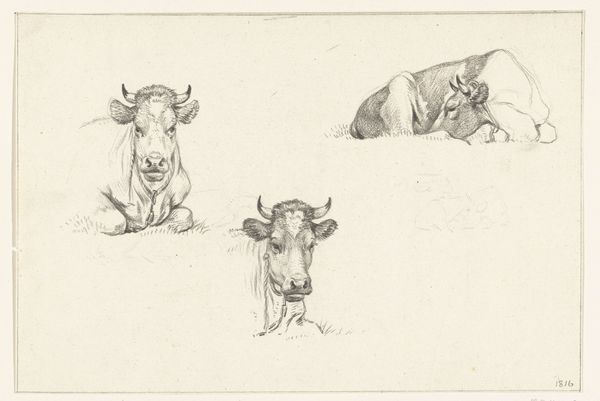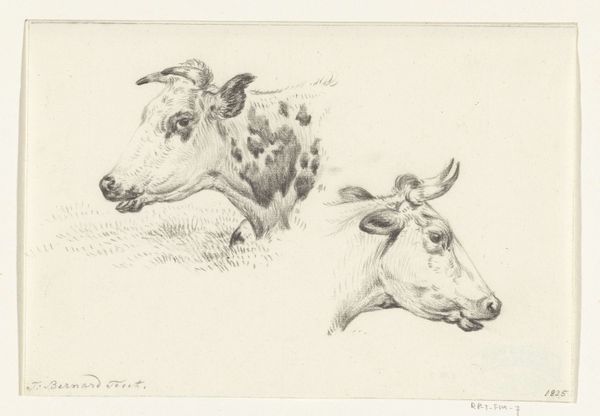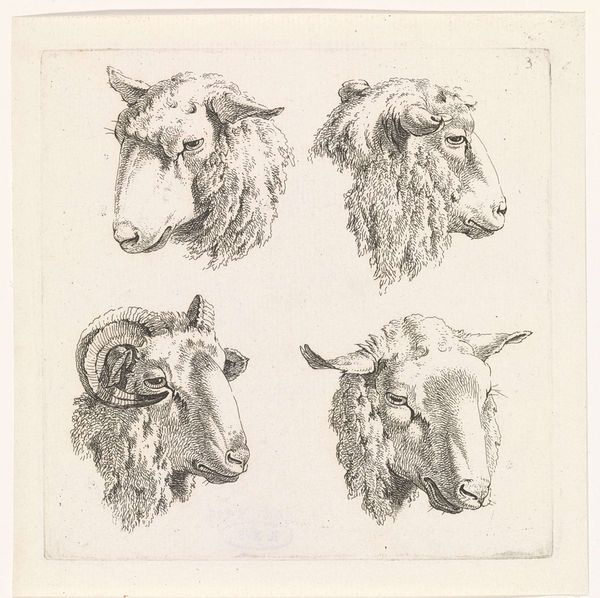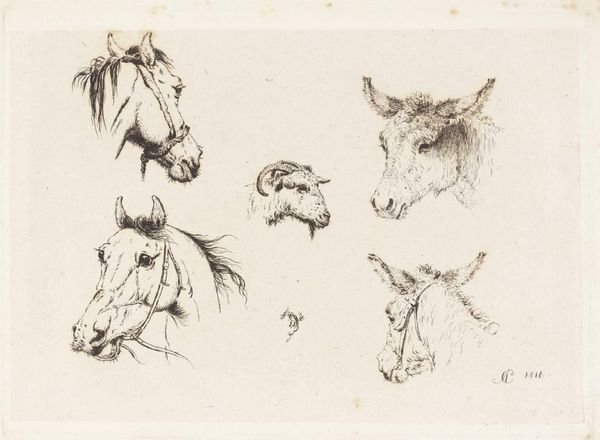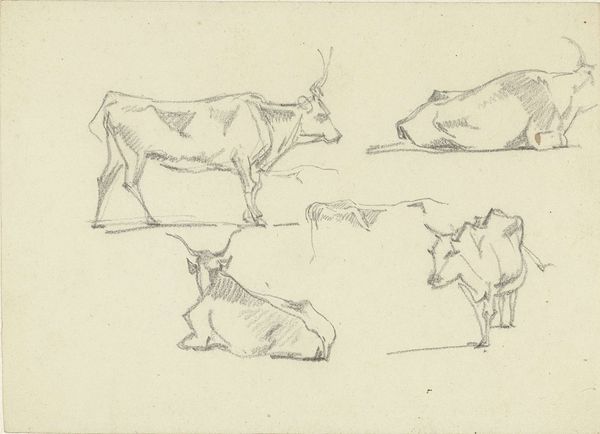
drawing, paper, pencil
#
portrait
#
drawing
#
amateur sketch
#
light pencil work
#
pen sketch
#
pencil sketch
#
paper
#
personal sketchbook
#
ink drawing experimentation
#
pen-ink sketch
#
pencil
#
sketchbook drawing
#
pencil work
#
genre-painting
#
academic-art
#
realism
#
initial sketch
Dimensions: height 182 mm, width 178 mm
Copyright: Rijks Museum: Open Domain
Editor: This is "Vier studies van een koeienkop," or "Four Studies of a Cow's Head," by Pieter Jan Guise, dating sometime between 1824 and 1859. It's a pencil drawing on paper, and it feels very… intimate. Almost like a collection of portraits. What do you see in this piece that stands out? Curator: What strikes me immediately is the artist's focused attention on these bovine subjects. In the context of 19th-century art, especially Realism and Academic art, the depiction of animals takes on new layers of meaning. How might these studies challenge or reinforce ideas about labor, rural life, and the relationship between humans and animals within agricultural society? Editor: That's a fascinating question. I guess I hadn't considered the social implications of focusing so intently on farm animals. I was mostly struck by the artist's technique and how skillfully he captured their different expressions. Curator: Indeed. The artistic skill is evident. However, thinking about the artist’s intent through the lens of critical theory prompts questions about whose stories are valued and represented. What can this tell us about how Guise and his contemporaries perceived the rural working class, the economic value of livestock, or the very nature of existence of non-human life? Editor: I see your point. The drawings could be more than just studies; they could reflect broader social and economic perspectives. It almost seems like a quiet, observational commentary on agricultural life. Curator: Exactly. And within art historical narratives, who is empowered to gaze and interpret the lives of the other. This piece, however small, embodies larger themes. Editor: This makes me appreciate the drawing even more, knowing there’s an underlying commentary beyond just the artistic skill. Thank you for sharing. Curator: My pleasure. Art becomes truly engaging when it bridges technique with social understanding and critical reflection.
Comments
No comments
Be the first to comment and join the conversation on the ultimate creative platform.



